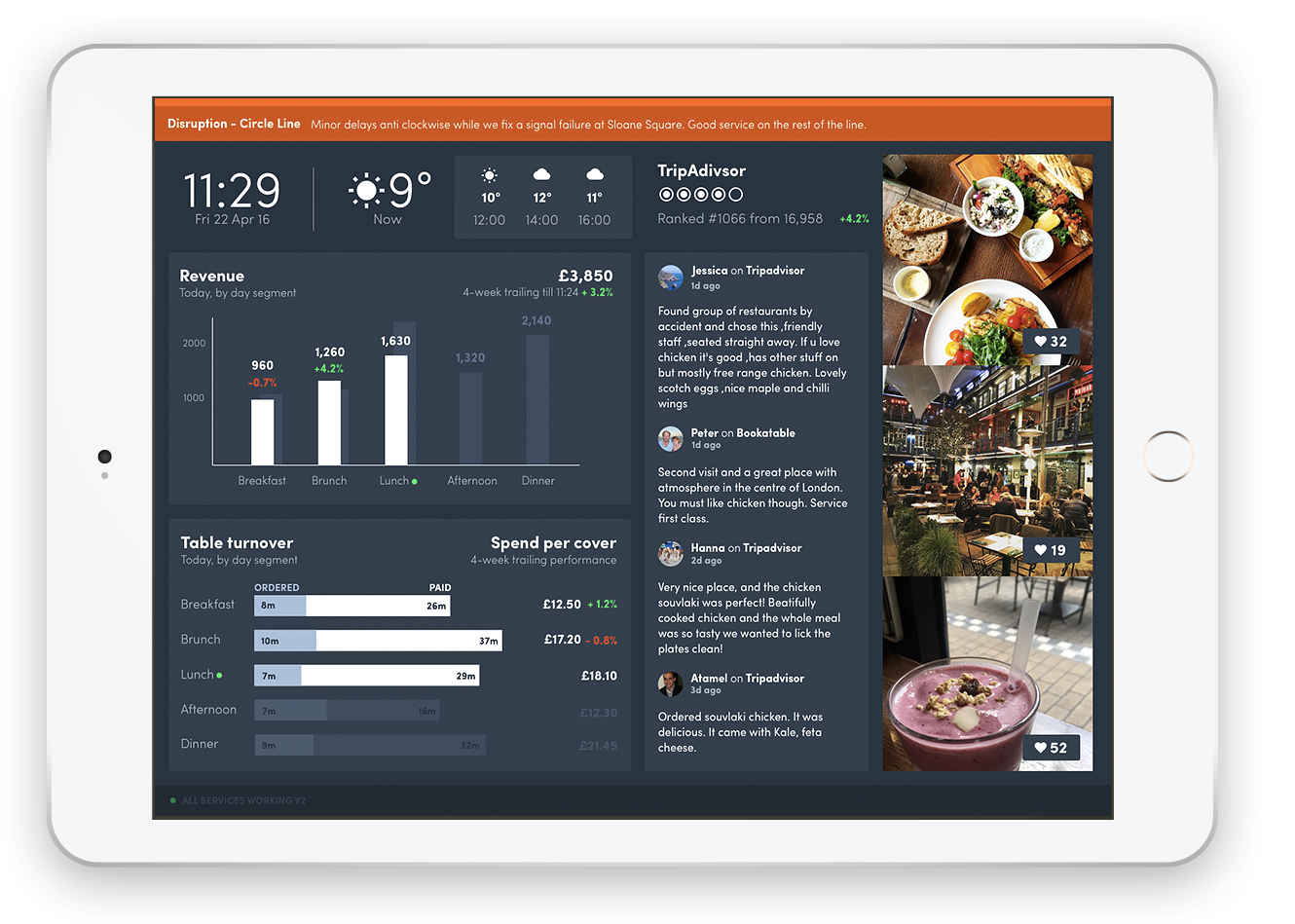Happytables is changing from being a platform that hosts restaurant websites to one that provides analytics and insights by tapping into apps that restaurants are already using to promote their businesses. The company uses WordPress as a command center for the application that communicates with various restaurant-tech APIs to deliver information to the dashboard in realtime.
“We started with the website builder a while back,” Founder and CEO Noel Tock said. “It’s been a great ride, but we realized two things: 1) Website builders have become a race to the bottom with regards to revenue as well as extremely competitive, and 2) From our many conversations with restaurants, their challenges have become much larger; consolidating data and insights from all the products they now use.”
One of the Happytables beta restaurants in London uses 14 different applications to manage its sales, operations, and marketing, and Tock says this trend is only growing.
“The centre of gravity is shifting from the Point of Sale to a very fragmented collection of siloed products (reservations, online ordering, staff scheduling/wages, loyalty, waitlist, social, etc.),” Tock said. “Becoming that 30,000 foot view whilst generating actionable insights across the portfolio of applications is the challenge we’ve taken on with the new Happytables.”
The first installation of the new Happytables was set up for Whyte & Brown in London where the team is focusing their beta testing. The application currently aggregates data from POS (Point of Sale) and Social, but Tock says this will rapidly evolve to providing various insights from POS and Labor, such as revenue forecasting, employee performance, and breakfast/lunch/dinner performance.
“It’s been very exciting working towards actionable insights, whereby we can tell a waiter that he/she was underselling a certain product or category compared to their colleagues, or that a particular employee performs a lot better on lunch then on dinner,” Tock said.
Below you can see an example of Happytables’ latest kitchen dashboard, using the team view as opposed to the individual employee recommendations/suggestions view.
The new Happytables uses WordPress as a backend and the WP REST API and ReactJS on the frontend. Although the development team still uses WordPress as one of its core technologies, the infrastructure is a bit more complicated.
“It’s not pure WordPress for the data storage,” CTO Aaron Jorbin said. “In fact, very little of it is actually stored inside WordPress. It is used to store some information about the restaurant and manage requests to third parties where we fetch the data and then store it in DynamoDB.”
The screenshots in this post show the WordPress theme in full screen mode, but Jorbin said the restaurant staff never interact with wp-admin. Restaurant operators use the app to view all the realtime information coming in so that they can make better decisions about how they run their businesses.
Happytables is still hosting its customers from its first iteration as a website builder, but Tock said most are not good candidates for the beta.
“The infrastructure is quite different now as we’re capturing different types of data (previously web content, now largely transactional data),” he said. “Our customers on the website builder platform came from all walks of life, so there’s not many who fit the ideal beta candidate (using Micros/Aloha as POS, based in London, run a multiunit restaurant, etc.).
“We’re just looking to see how we can fit this into the larger Happytables model downstream,” Tock said. “If we’re going to implement so many API’s, there’s also value in tying those back to the website.”
Not many aspects of the new infrastructure have been open sourced yet, as the team has been moving fast. Tock said they hope to make some of their code public further down the road after it’s been tested.
“Once we’re past testing/beta, I’m sure a number of features will become more mature tools and move into their own public repo if they are of that sort of benefit,” he said. The new infrastructure is one of the many exciting ways that the WP REST API is being used to bring a host of information into WordPress from various third party applications and tie it all together in a useful way.

